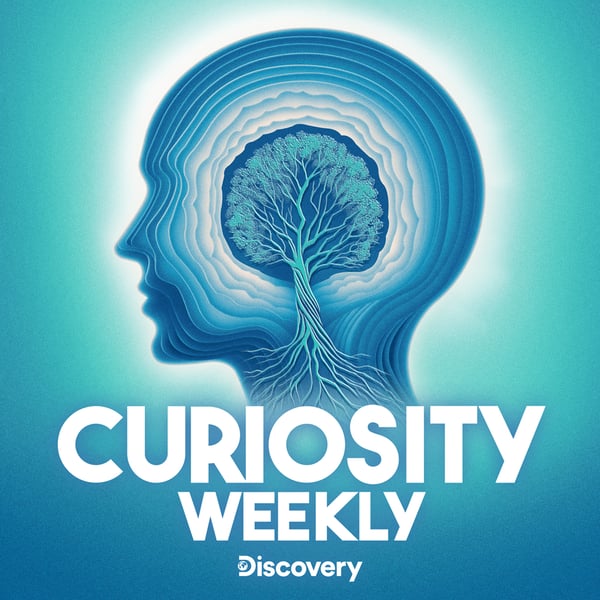Coronavirus Vaccine Development: Scientific Challenges and Timelines with Dr. Julia Schaletzky (COVID-19 Bonus Episode)
Curiosity Weekly
Warner Bros. Discovery
4.6 • 935 Ratings
🗓️ 29 March 2020
⏱️ 48 minutes
🧾️ Download transcript
Summary
Dr. Julia Schaletzky explains what it takes to develop vaccines for viruses like COVID-19. Dr. Schaletzky is the Executive Director of the Center for Emerging and Neglected Diseases, the Drug Discovery Center, and the Immunotherapy and Vaccine Research Institute at UC Berkeley.
In this special coronavirus coverage from Curiosity Daily, Dr. Schaletzky discusses:
- What science needs to be done in order to make a new vaccine a reality?
- Why can’t we grow a live virus vaccine for COVID-19?
- What are the challenges associated with animal testing?
- How long does it take to complete clinical trials and why are they so important?
- What are the differences between ebola vaccine development and coronavirus vaccine development?
- Why do we update vaccines for the seasonal flu, and will we have to update a COVID-19 vaccine after it’s been developed?
- What zoonotic viruses have we identified besides COVID-19 and how can we protect humans from them in the future?
- What is it about a bat’s immune system that increases risk of virus transmission to humans?
- How long should it take to create a vaccine, and will it happen before we’ve developed herd immunity?
- What’s the difference between a live virus vaccine, a recombinant vaccine, and an mRNA vaccine, and which might be most effective against coronavirus?
- How long does it take to be sure a vaccine is safe for humans?
- Why can’t everyone in the US get a serological test to see if they’ve already had COVID-19?
- What can the coronavirus pandemic teach us about policies and funding that impacts scientific research in the future?
Additional resources from Dr. Julia Schaletzky, Executive Director of the Henry Wheeler Center for Emerging and Neglected Diseases at University of California, Berkeley:
- Center for Emerging and Neglected Diseases (CEND) http://cend.globalhealth.berkeley.edu/
- CEND COVID-19 Outbreak Watch http://cend.globalhealth.berkeley.edu/coronavirus-outbreak-watch/
- Immunotherapy and Vaccine Research Institute (IVRI) https://ivri.berkeley.edu/
- Department of Molecular & Cell Biology (MCB) faculty bio for Julia Schaletzky, PhD https://haas.berkeley.edu/biology-business/academics/faculty/
- Follow @CENDUCBerkeley on Twitter https://twitter.com/CENDUCBerkeley
- Follow
- Dr. Schaletzky’s CEND profile http://cend.globalhealth.berkeley.edu/julia-schaletzky-phd/
Subscribe to Curiosity Daily to learn something new every day with Cody Gough and Ashley Hamer. You can also listen to our podcast as part of your Alexa Flash Briefing; Amazon smart speakers users, click/tap “enable” here: https://curiosity.im/podcast-flash-briefing
Find episode transcript here: https://curiosity-daily-4e53644e.simplecast.com/episodes/coronavirus-vaccine-development-scientific-challenges-and-timelines-with-dr-julia-schaletzky-covid-19-bonus-episode
Hosted on Acast. See acast.com/privacy for more information.
Transcript
Click on a timestamp to play from that location
| 0:00.0 | Hi, you're about to get smarter in just a few minutes with Curiosity Daily from Curiosity.com. |
| 0:06.0 | I'm Cody Goff. |
| 0:07.0 | And I'm Ashley Hamer. |
| 0:08.0 | In this special bonus episode, you'll learn about what it takes to develop vaccines for viruses like COVID-19, with help from Dr Julia |
| 0:15.4 | Shaletsky. |
| 0:16.4 | Dr Shaletsky is the Executive Director of the Center for Emerging and Neglected Diseases, |
| 0:21.5 | the Drug discovery center, |
| 0:22.8 | and the Immunotherapy and Vaccine Research Institute |
| 0:25.8 | at UC Berkeley. |
| 0:27.2 | And she covers a lot in this conversation, |
| 0:29.6 | so buckle up. |
| 0:30.8 | Ashley and I will catch up with you |
| 0:32.0 | at the end of the interview, but right now let's |
| 0:33.8 | satisfy some curiosity. What does it take to make a vaccine in the first place? |
| 0:39.0 | Like what science has to be done in order to make that a reality in order to make any vaccine a reality. |
| 0:45.6 | Yeah, I mean the more data you have the the faster you can move. I mean in the in the old days when we didn't know much we were able to just take you |
| 0:55.2 | know blood and plasma from from infected people you know you didn't need to know a lot of |
| 1:00.5 | data at the time to isolate the virus and maybe inactivated and try very crude |
| 1:07.4 | vaccination experiments but if you're looking at a large scale implementation of vaccine research that should be rolled out broadly. |
| 1:16.6 | The first thing that's good to have is the sequence, genetic sequence of the virus, and |
| 1:21.7 | that with the new technologies we have in sequencing. of the |
| 1:25.0 | sequence of the virus and that with the new technologies we have in sequencing was published really just a couple of days after we heard of the first case |
... |
Please login to see the full transcript.
Disclaimer: The podcast and artwork embedded on this page are from Warner Bros. Discovery, and are the property of its owner and not affiliated with or endorsed by Tapesearch.
Generated transcripts are the property of Warner Bros. Discovery and are distributed freely under the Fair Use doctrine. Transcripts generated by Tapesearch are not guaranteed to be accurate.
Copyright © Tapesearch 2025.

